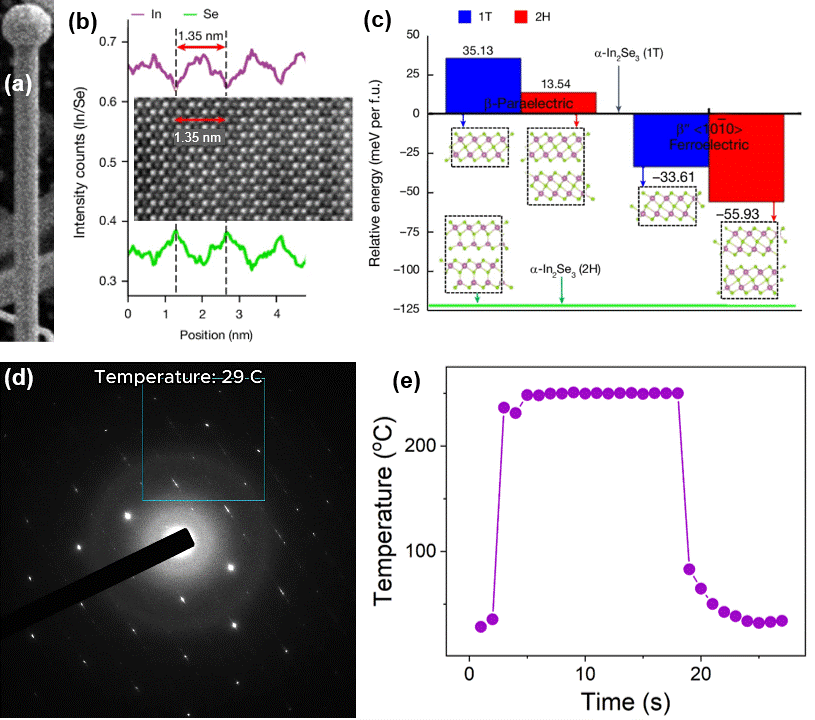How do defect densities affect In2Se3 phase transitions?
Gaurav Modi, Ritesh Agarwal, and their colleagues at the University of Pennsylvania, the India Institute of Science, and the Massachusetts Institute of Technology published on their use of the Hummingbird Scientific in-situ MEMS heating + biasing TEM holder to examine the polarization order-disorder phase changes in ferroic β″-phase In2Se3. The in-situ heating experiment accompanied a study of electric field-driven amorphization and density functions theory simulations (DFT) to reveal the influence of defect density on phase transition mechanisms.

a) Scanning electron microscope (SEM) image of as-fabricated In2Se3 nanowire with Au-Pd catalyst at the tip. b) Energy dispersive X-ray spectroscopy (EDS) linescan showing periodic variation in In and Se chemical composition along the <1100> direction. c) DFT calculation of the relative energies of various polymorphs of In2Se3 along with inset crystal structures. d) SAED video of superlattice reflection evolution with rapid temperature increase to 250 °C followed by rapid cooling, showing β″ to β to β″ phase transitions. e) Temperature profile of heating experiment with time. Copyright © The Author(s), under exclusive license to Springer Nature Limited 2024
In2Se3 nanowires were imaged in-situ using selected area electron diffraction (SAED) during heating to 250 °C in the Hummingbird Scientific heating chip. The unique coil heater chip design enabled rapid heating with precisely calibrated resistance-temperature measurement and, with current switched off, rapid cooling back to room temperature. At 250 °C, superlattice reflections disappear indicating a β″ to β phase transition and reappear upon cooling as the transition reverses. Such a polarization order-disorder transition was linked to lower defect density while higher defect density was linked to a crystalline-amorphous, structural order-disorder transition. The study revealed unique phase change mechanisms facilitated by the interplay of electric field, current, piezoelectric stress, acoustic jerks, and Joule heating to advance the development of metastable materials and devices.
Reference: Gaurav Modi, Shubham K. Parate, Choah Kwon, Andrew C. Meng, Utkarsh Khandelwal, Anudeep Tullibilli, James Horwath, Peter K. Davies, Eric A. Stach, Ju Li, Pavan Nukala & Ritesh Agarwal, Nature (2024) DOI: 10.1038/s41586-024-08156-8
Full paper Copyright © The Author(s), under exclusive license to Springer Nature Limited 2024
View All News

